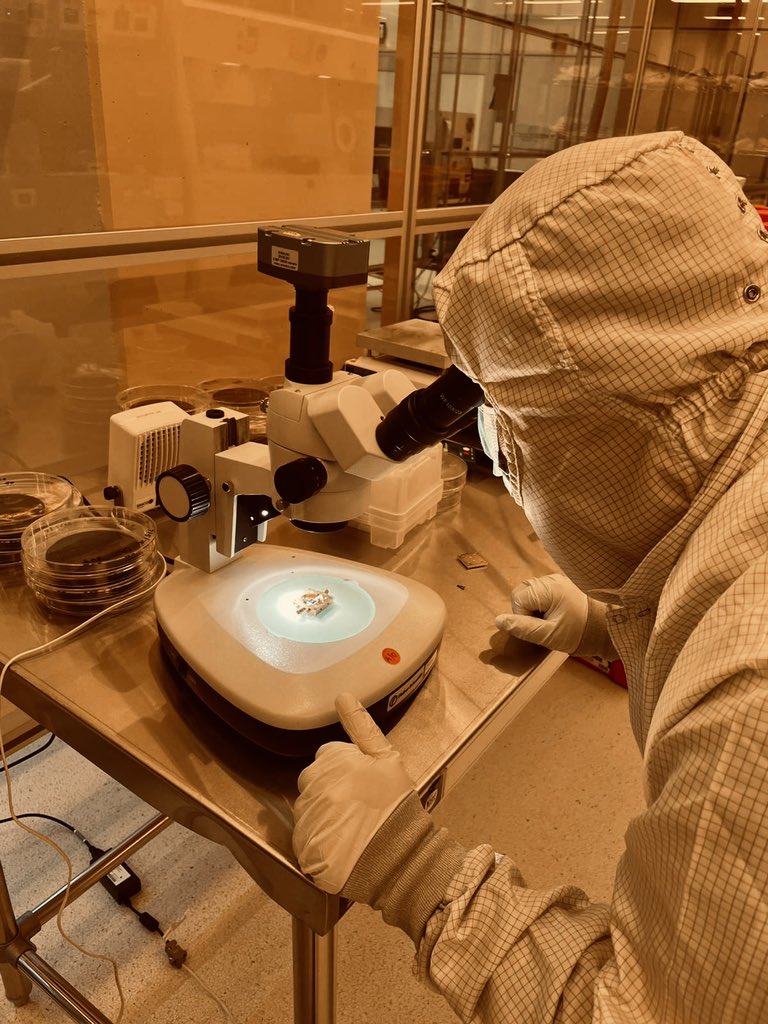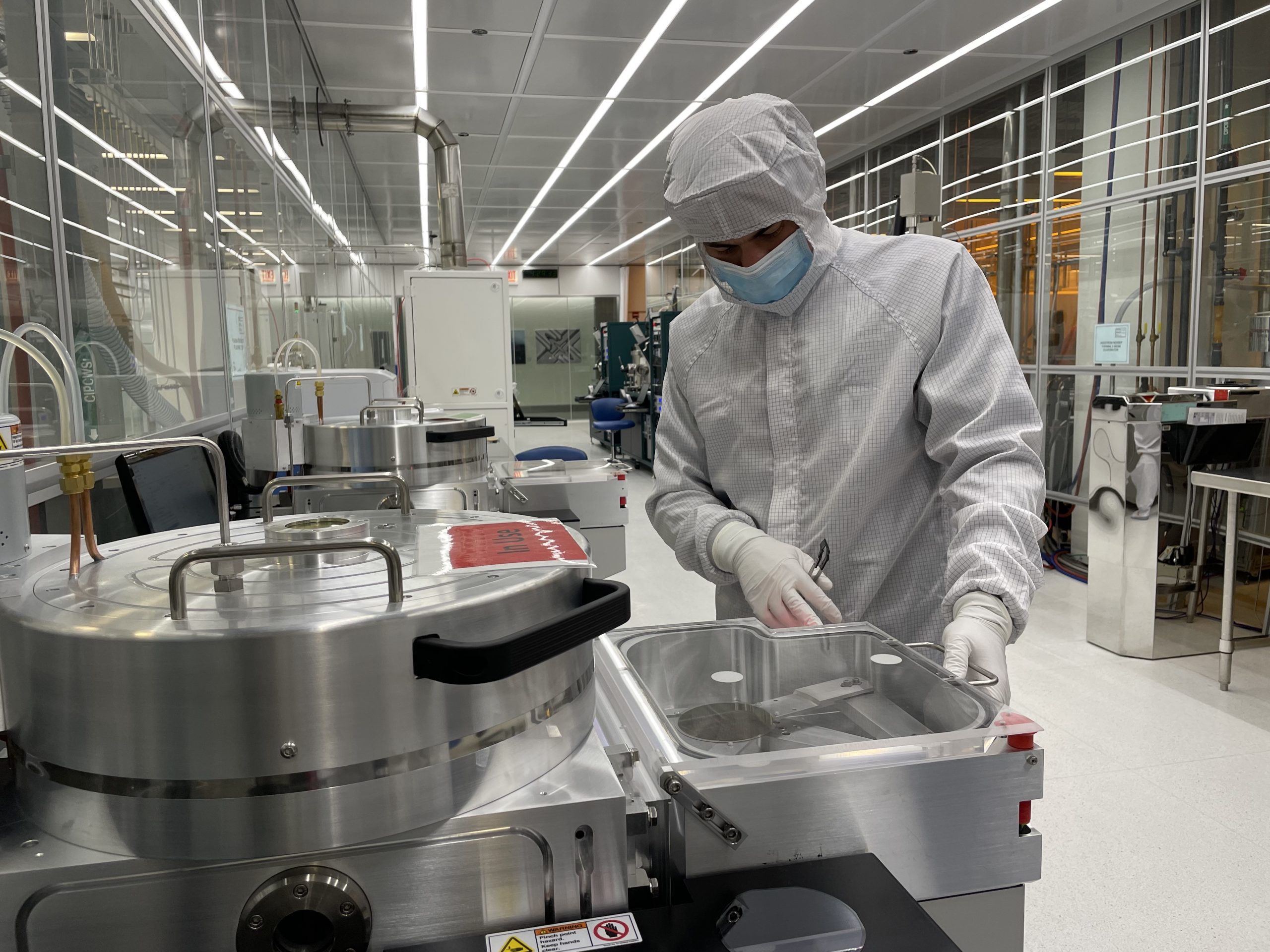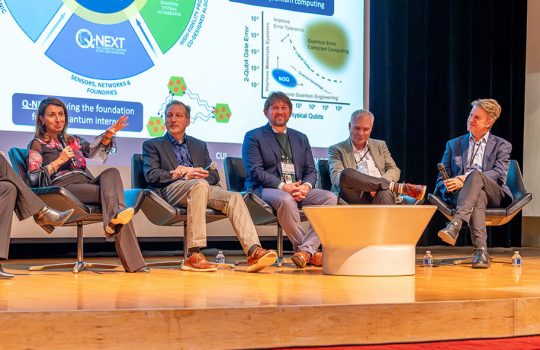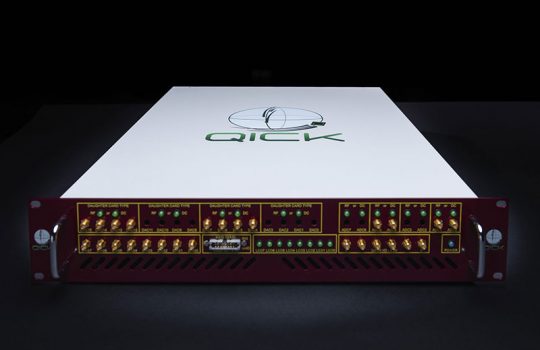A gourmet chef can’t prepare a delicious dish without the proper kitchen space, cutlery or fresh ingredients. Like meticulous chefs who analyze how each ingredient in the cooking process contributes to a dish’s flavor, quantum computing researchers follow a similar method to fabricate high-quality superconducting quantum devices.
Researchers from the Superconducting Quantum Materials and Systems Center, hosted by the U.S. Department of Energy’s Fermi National Accelerator Laboratory, are disentangling the architecture of quantum devices and studying each material to see how they affect the devices’ performance.
To achieve their goal, SQMS Center researchers are using the Pritzker Nanofabrication Facility at the University of Chicago. It’s a state-of-the-art user facility where researchers can fabricate superconducting quantum devices with different materials and processes.
“This is a great example of collaboration between the university and Fermilab with outstanding results,” said Juan de Pablo, University of Chicago executive vice president for science, innovation, national laboratories and global initiatives. “Fermilab’s scientists needed a state-of-the-art nanofabrication facility to advance their research, and they were able to conveniently access it through the university. Working together, we can scale projects like this one and answer questions in a field of vital importance.”
Turning access into results
Evaluating the performance of quantum devices will guide SQMS Center researchers toward understanding the origin of qubit performance limitations. The first results indicating the achievement of high-performance devices were reported this summer.
The big hurdle for making a working quantum computer: Quantum states are very fragile. Defects and properties of the materials that make up superconducting qubits are responsible for performance limitations.
“The Pritzker Nanofabrication Facility provides us access to an array of tools to experiment with different materials to extend the performance of our superconducting quantum devices,” said Mustafa Bal, head of SQMS Center nanofabrication. “Their support and ease of access allows the center to fabricate the devices needed to achieve our goal of building a quantum computer.”
“This is a great example of collaboration between the university and Fermilab with outstanding results …Working together, we can scale projects like this one and answer questions in a field of vital importance.” – Juan de Pablo, University of Chicago executive vice president
From proximity to progress
The SQMS Center comprises 23 partner institutions, with the National Institute of Standards and Technology and Rigetti Computing both providing access to their nanofabrication facilities. However, the Pritzker Nanofabrication Facility, located on the University of Chicago campus, is only an hour’s drive away from Fermilab. The close proximity allows SQMS Center researchers to construct their own superconducting quantum devices near the lab.
“We need to try many recipes, which require sophisticated tools and large throughput,” said Anna Grassellino, director of the SQMS Center. “By making devices in multiple foundries nationwide with a coordinated approach, we will accelerate toward making better qubits. Critically, we will also be able to verify how reproducible and systematic our results are and uncover hidden variables.”
To this end, the SQMS Center has established and launched a new nanofabrication taskforce within the center. It constitutes a large-scale, nationally coordinated effort toward qubit devices’ performance improvement.
Moreover, with access to this nearby fabrication facility, students and principal investigators at the SQMS Center can work together to design and fabricate superconducting quantum devices, thus training the next generation of quantum computing researchers.
“Being able to see the design of our quantum devices on the screen come to life through the work of our nanofab team enables us to test different qubit designs with different materials,” said Shaojiang Zhu, who leads the superconducting qubit design and simulation team. “Our first devices have shown high-quality factors, which paves the way to build better superconducting qubits.”
The Superconducting Quantum Materials and Systems Center is one of the five U.S. Department of Energy National Quantum Information Science Research Centers. Led by Fermi National Accelerator Laboratory, SQMS is a collaboration of 23 partner institutions—national labs, academia and industry—working together to bring transformational advances in the field of quantum information science. The center leverages Fermilab’s expertise in building complex particle accelerators to engineer multiqubit quantum processor platforms based on state-of-the-art qubits and superconducting technologies. Working hand in hand with embedded industry partners, SQMS will build a quantum computer and new quantum sensors at Fermilab, which will open unprecedented computational opportunities. For more information, please visit sqms.fnal.gov.
Fermi National Accelerator Laboratory is supported by the Office of Science of the U.S. Department of Energy. The Office of Science is the single largest supporter of basic research in the physical sciences in the United States and is working to address some of the most pressing challenges of our time. For more information, please visit science.energy.gov.





